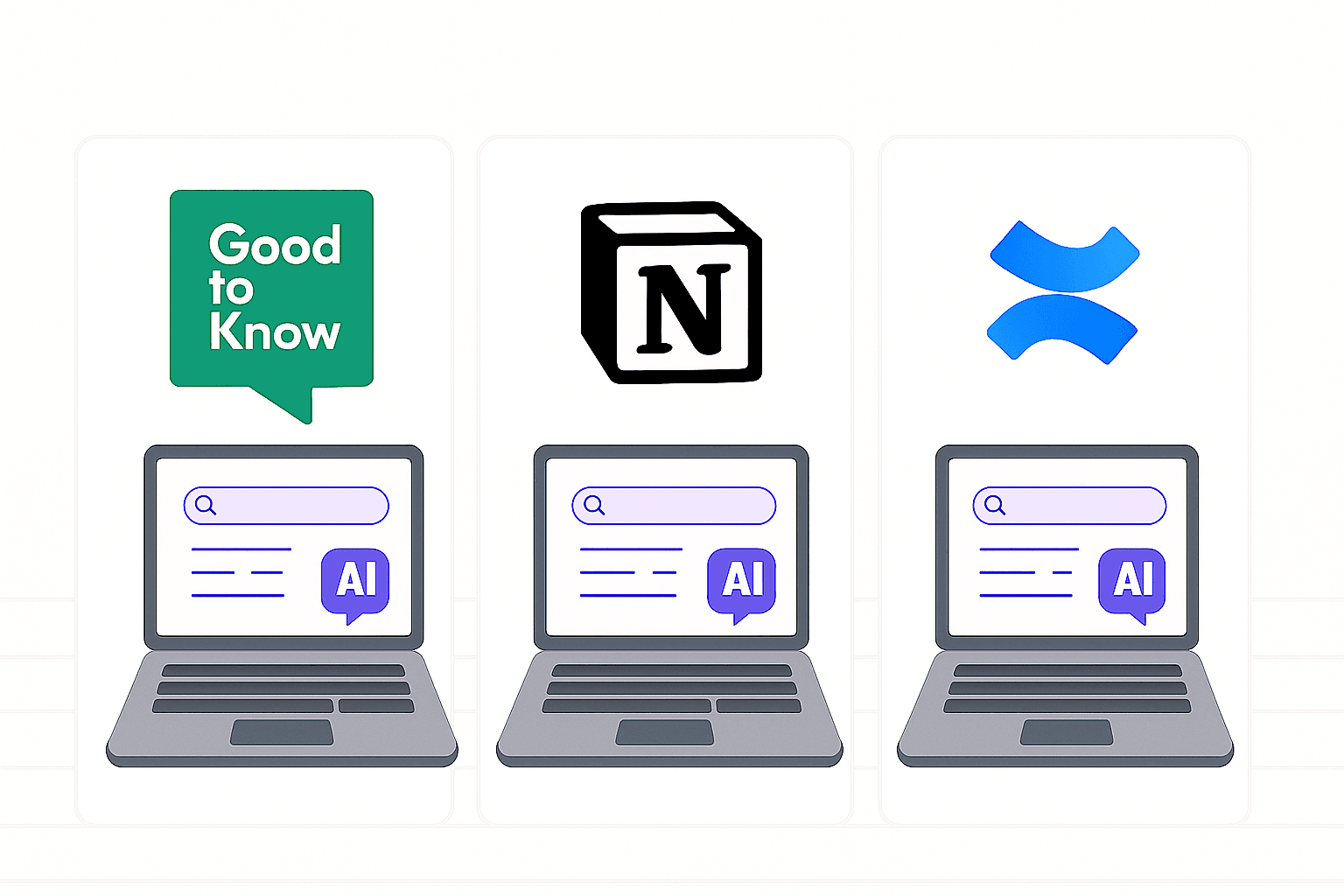
Choosing a knowledge platform is no longer just about where teams write. It’s about how quickly they can retrieve and reuse that knowledge. Below is a concise comparison of two popular tools—Notion and Confluence—and Good to Know, which was designed around AI from day one.
1. Core Design Philosophy
| Platform | Primary Focus | AI Strategy |
|---|---|---|
| Notion | Flexible pages & databases | Add-on AI features (writing, Q&A) |
| Confluence | Structured wiki for teams | Marketplace apps, cloud add-ins |
| Good to Know | Document understanding & chat | Native: ingestion → embeddings → chat |
Good to Know starts where the others add plug-ins — at automated understanding, not manual structuring.
2. Getting Information In
• Notion – manual page creation or copy-paste. PDF support is limited, large files require splitting.
• Confluence – importers for Word & PDF; hierarchy must be planned up front.
• Good to Know – bulk upload any format; the pipeline handles chunking, metadata extraction and semantic search.
3. Finding Information Out
| Task | Notion | Confluence | Good to Know |
|---|---|---|---|
| Keyword search | ✅ Fast | ✅ Fast | ✅ Fast |
| Ask in natural language | 🔶 AI add-on | 🔶 Marketplace app | ✅ Built-in |
| Cite sources inline | 🔶 Partial | 🔶 Partial | ✅ Always |
| Semantic filters (entity, date, etc.) | 🔶 Database formulas | 🔶 Requires setup | ✅ Out of the box |
Good to Know’s retrieval is built with RAG technology, returning precise passages with citations in seconds.
4. Maintenance Over Time
• Notion – relies on manual refactoring; stale pages proliferate.
• Confluence – page trees grow deep; migration projects become a regular cost.
• Good to Know – documents remain in original form; AI enrichment updates automatically as models improve.
5. When to Choose What
| Choose if you need | Best Fit |
|---|---|
| Collaborative writing, design docs | Notion |
| Compliance-oriented wiki with approvals | Confluence |
| Instant answers from large document sets | Good to Know |
Many teams run Notion and Confluence side by side. Good to Know complements them by turning historical PDFs, contracts, and research papers into a searchable knowledge base without adding content debt.
If documentation is mostly pages you author, traditional tools work well. If knowledge lives in heavy files and you spend more time searching than writing, an AI-native platform like Good to Know is the faster path. Join the waitlist to see how quickly it surfaces answers.